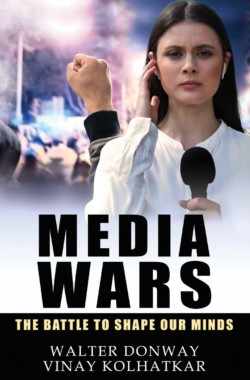The Imitation Game
The Imitation Game, a joint British-American production hit the U.K. and the U.S. theatres in November 2014, and Australia in January 2015. Produced with a skimpy $15 million, it has already grossed thrice as much.
I had brought along my now-customary thermos-full of decaf for the night show, and my wife said I will be too preoccupied to finish all of it if I love the film. Her birthday, her recommendation.
The Imitation Game came off The Black List, an annual list of most well-liked but unproduced screenplays, a distinction that it shares with classics like American Hustle, Slum Dog Millionaire, and The King’s Speech.
Set mainly during WWII, the principal narrative centers on a high-IQ team, an assembly of linguists, mathematicians, logicians, and numismatists, recruited to decrypt the German coded messages that instructed its planes and warships to intercept Allied convoys.
Alan Turing, a mathematics professor and a cryptographer since childhood, is the protagonist. The telling overlaps two other time-periods with the main one—Alan’s difficult childhood, and his societal estrangement post WWII. The childhood flashbacks hint at Alan’s discovery of his sexual orientation at boarding school, his unusual abilities, and his social ineptness.
Pencil in Benedict Cumberbatch for an Oscar nomination, and a BAFTA for Best Actor.
Pencil in Benedict Cumberbatch for an Oscar nomination, and a BAFTA for Best Actor. If you don’t know who he is, you will soon. Alex Lawther (as the young Turing) and Keira Knightley (as numismatist Joan Clarke) shine enough to be in the running for supporting-actor gongs. Credit is due the director, Morten Tyldum, when the whole cast inhabits the characters it plays.
Mathematics won the war so to speak, says the odd voiceover. Brain beats brawn in a game of reason and deception. Plenty of standard techniques on display: delayed repartees—some even by several scenes, the midpoint strategy change, the even-bigger problem appears when the big one is solved (we have broken the code, now comes the hard part—not to let the Germans know we have, and yet save lives), the personal conflicts, the rising jeopardy. Alan Turing’s mission in the movie is to solve the puzzle. Puzzle solved, he does not scream in turmoil over how to use the new knowledge. He is machine-like, dictated by logic alone. Screenwriting teachers will detect a missing in-the-cave moment, the deep soul searching absent when decisions must be made about whether to lose lives now so more may be saved later. That, and the interference of the epilogue storyline in the evolving principal narrative, were my only misgivings.
The epilogue focus is on maltreatment of homosexuals in post-war Britain, yet the subtle feminist display of a brilliant female mathematician (Keira Knightley) at work cannot be missed. So it’s all PC as Robert Gates, LGBT associations, and the Yahoo CEO have already thrown in their support for the resurrection of interest in a LGBT genius, denied celebrity status for so long because the file remained “Classified” for decades. So expect a Best Film nomination at the Oscars.
The real beauty is the depiction of the genius inventor at work without too much stereotyping. Some social ineptitude adds authenticity, even though historians dispute whether Alan Turing had Asperger’s, and lends a touch of humanity to the intellectual arrogance of the mathematician. Turing is dramatized in a manner so as to lend weight to the storyline’s central theme: Inventors are ostracized because they are apolitical, and yet they serve humanity in their dedication to their work. Showing a “popular, gregarious, and politically astute” Turing will not serve the chosen theme. Nor would it have created the conflicts on screen between his team and himself, particularly as he obtains the team’s leadership by arrogant, disobedient bravado. Turing is stylized just about right: Not too little, not too much.
The best parts are in fact the alleged historical inaccuracies. Graham Moore’s adapted screenplay from Hodges’ book amends to suit a compulsively riveting structure, deliberately ignoring history to introduce Russian spies and thus a crisscross conflict, stylized characters, and dramatized revelations of code-breaking clues found in a flirting game, in which Turing is, at first, a confused bystander. For that, I think Moore deserves the Best Adapted Screenplay gong, he shows us precisely why fiction needs to amend history.
The screenwriter is not a historian and bears no responsibility toward complete historical accuracy. His key responsibility as an artist is to make the story as enthralling and as inspiring as possible.
The screenwriter is not a historian and bears no responsibility toward complete historical accuracy. His key responsibility as an artist is to make the story as enthralling and as inspiring as possible. Radio Times “accused” the screenplay of “romanticizing”—of making Turing’s relationship with Joan Clarke stronger than it really was, and of having the beautiful Keira Knightley play the “rather plain-looking” Joan Clarke. The romanticizing is precisely what is laudable. The screenwriter bears responsibility to his audience for perfecting technique, for creating an authentic-feeling story, as uplifting as possible. Not quite damn the facts that inspired it, as essential aspects (Did the portrayed critical incident resemble the main one? Was Turing gay? Did he invent Christopher (the machine)?) must be addressed accurately, but looks, a few more spies, some twists and turns, a flirting incident? These are non-essential aspects. Moore gets it. Totally.
Great fiction is not just a “good story, well told.” Great fiction is a “well-constructed story, well-told.” History is not always as inspiring a story as it could have been, if constructed by our imagination. Make no mistake, this is great fiction. If you want historical accuracy, go to the library or see a documentary, as against reading a novel or watching a movie that does not claim to be a documentary.
“Sometimes it is the people no one imagines anything of, who do the things that no one can imagine”—the central theme, stated in Act I, is served to Turing, is re-served in Act II, this time by Turing to Clarke. But it’s the last serve in Act III that is the most telling, the vindication of Alan Turing’s life in the very last scene, as Clarke back-serves the theme to Turing, a delayed repartee without a tongue in the cheek. He smiles amidst the ugly aftermath of his uncelebrated, lonely life.
I stayed for the credits roll, then picked up the thermos in the theatre. It was still half-full. My companion smiled.
« Cesare Mori Rides Again in Romantic Style John Allison on Entrepreneurial Banking »










